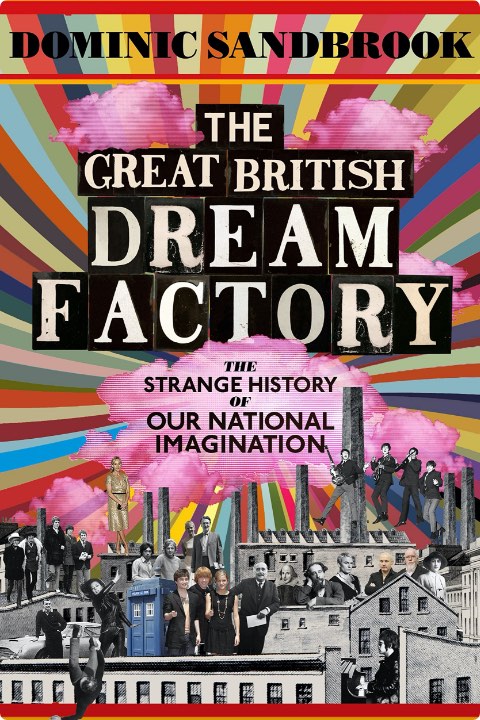Is it true that, having lost an empire, we reinvented ourselves as an island of entertainers? Do we channel the same rigour and vigour into film and music and literature as once went into conquering continents? Is there a residual colonialist bias in our arts, seen, for instance, in our cinematic penchant for creating patriotic period dramas such as Henry V or The King’ s Speech?
How much of our cultural success depends on the US market and the accident of a shared language? To what extent does our cultural expression reflect not our idea of ourselves but an American distortion? Do international smash hits such as Julian Fellowes’s languid TV drama Downton Abbey reflect our national identity better than, say, Martin Amis’s lurid 1980s novel Money — a critically acclaimed and unashamedly non-nostalgic satire on capitalist gluttony?
Are we, as a nation, more nostalgic than other nations such as Italy or Austria? Isn’t it also the case that, for every Brideshead Revisited, we can think of a Leopard or Radetzky March? And if so, might it be that some of the arts lend themselves to the rueful mood (that et in Arcadia ache) more readily than others? Is literature, perhaps, an inherently nostalgic medium? Was language created, first and foremost, with the aim of recapturing the past? Is the very structure of the English language, with its precise subclauses and stately linear progression through each sentence (the bows of its parentheses; the heel-clicks of its semi-colons), particularly suited to the task of describing a more formal, ritualistic, bygone age?
These are all questions that the historian Dominic Sandbrook either fails to raise, or raises but fails to answer, or at least fails to answer properly in his otherwise very pleasant and intelligent tour of recent popular culture, The Great British Dream Factory: The Strange History of Our National Imagination.
He takes as his premise the idea that Britain punches above its weight culturally, which is probably true. For my money, our music scene is the best in the world, despite the fact that in financial terms we aren’t even the biggest industry in Europe, having recently ceded that position to Germany. Almost no one now reads poetry, or writes any worth reading, but over the past 100 years, which is the period Sandbrook considers, we’ve held our own pretty well. (And of course, going further back, we have no rivals.) In the art world, some say, we’re thriving, though I have my doubts. And when it comes to novels, we’ve definitely slipped down the rankings.
I spent much of the summer writing with a friend a book called How to Sound Cultured: Master the 250 Names that Intellectuals Love to Drop into Conversation (due out in November from Icon Books) and naturally a fair few of those names belong to novelists. But I was struck by how rarely the English names matched up to the Americans. We’ve had our stylists: Waugh and Greene spring to mind — and maybe Ishiguro. But even they don’t have the weight of a Bellow or a Roth (how-ever much we may prefer kicking back with our collapsing copy of The End of the Affair to rereading, say, American Pastoral).
Sandbrook would reply, what about Agatha Christie? J.K. Rowling? J.R.R. Tolkien? As a mark of cultural significance, he favours financial success over excellence. So he discusses the Beatles more than Bowie, Lloyd Webber rather than Larkin. And his stats and insights are often fun. I loved his takedown of John Lennon as a narcissistic prat, citing the 42-minute film entitled Self-Portrait which the singer made of his own penis. Who knew that some of the funds for Chariots of Fire came from Dodi Fayed? And the discovery that the rock musical The Phantom of the Operahas ‘made more money than any film in history’ literally made me stagger back, amazed.
Having said all of this, if money’s the measure, why doesn’t Sandbrook mention the Inbetweeners films or Fifty Shades of Grey? The most likely reason is that they don’t support what he says in his preface is ‘perhaps’ his ‘main contention’: the idea that culturally ‘we still live in the shadow of the Victorians’. This may be true for him, but for most of us, it isn’t. Timidly, he adds:
Popular culture is such a richly diverse and fissiparous phenomenon that it would seem both odd and misleading to force it into the straitjacket of an excessively tight and hectoring argument.
Ducking through the smokescreen of that word ‘fissiparous’, let’s consider this claim. Naturally, no one likes a straitjacket (except, conceivably, fans of Fifty Shades of Grey), but otherwise I’d have to disagree. However diverse popular culture may be, I still prefer to read arguments that are hectoring and tight rather than, say, pandering and loose. Nor do I see how it could by any stretch have been ‘misleading’, let alone ‘odd’, if Sandbrook had had some more urgent thesis to put across — and in the process, perhaps, left fewer questions unanswered.
I should have loved, for instance, to know what he makes of the fact that, at around the time the British ceased to write novels of (let’s call it) Victorian heft, we became standard-bearers of the new artistic form of rock and pop music. Does he think it significant that both these cultural developments coincided roughly with the final demise of empire? At what point does a work’s financial return cease to reflect either talent or taste, and become more a function of the market? How has this been influenced by the rise of the internet? Is the reading of books in printed form doomed to extinction, and how will that affect what gets published in the future? To what extent has it already done so over the past decade and a half?
Most crucially of all, how soon will it be the case that to unfold a copy of, say, The Spectator and read a review of, for example, a book by Dominic Sandbrook will seem as studiedly antiquarian as if you were to wheel into the room a small portable harpsichord and launch into a performance of a Bach fugue?

